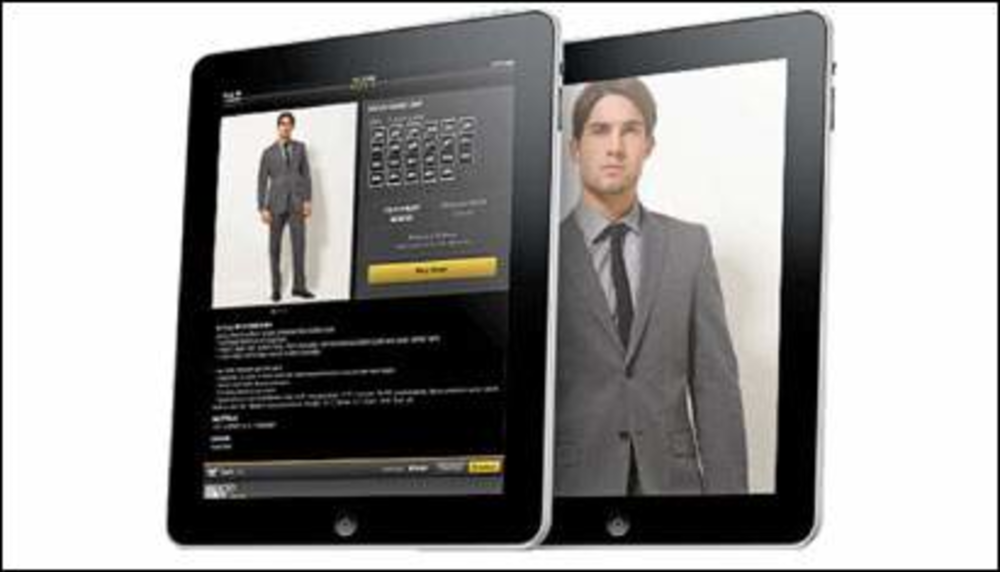When online luxury retailer The Gilt Groupe launched an m-commerce app for the iPad earlier this year, the application accounted for 3% of its entire sales in just three days. “We might have predicted that number over time,” says Shan-Lyn Ma, director of product development for Gilt, “but we were surprised at how quickly it became the favorite shopping channel for many of our members out of the gate.”
Few companies are willing to divulge sales results from m-commerce. However, examples like Gilt Groupe — in addition to increased smart phone usage and robust m-commerce sales forecasts (see sidebar) — indicate that the channel could soon become a significant revenue generator.
Despite that, survey of more than 400 online retailers globally shows the majority of them (80%) do not have a mobile commerce strategy in place. “We’ve been talking about mobile commerce for years, but only now has it arrived,” says Geoff Brash, VP of marketing for SLI Systems, a developer of online search and navigation technology which commissioned the research. “Retailers need to be prepared.”
DMNews spoke with retail marketing executives with an m-commerce strategy in place. They revealed it isn’t just about optimizing their existing e-commerce sites for mobile, but also creating a strategy that carefully considers what customers hope to achieve from an onthe- move shopping experience.
Imran Jooma, senior VP of e-commerce at Sears, says the retailer thinks about busy moms who want to save time by taking advantage of a sale while watching their kids’ soccer game. On its Sears2Go mobile site and apps, Sears tries to make it easy for them to access weekly specials, purchase them and have them shipped to their home or waiting at the nearest Sears location.
“You have to make sure the shopping experience is catered to mobile, so we don’t replicate every single Web feature,” says Jooma, who adds the retailer has seen “explosive growth” from the channel.
Gilt is experimenting with ways to make its sales more fun on mobile; for example, members have 36 hours to buy discounted luxury brands before they sell out. “We’ve started to see some success with exclusive sales for people who use mobile or even a particular device — things they wouldn’t see on the website,” says Ma. “This is a way we can make our mobile experience more game-like, given people use apps to amuse themselves when they have some spare time.”
One of the biggest challenges to a mobile strategy is the fragmentation of devices. 1-800-Flowers.com, for example, has a mobile website and apps for the iPhone, Blackberry and Android. “We want to be wherever our mobile shopper is, but a lot of retailers say, ‘I’ll just have an iPhone app because iPhones are hot,’” says Kevin Ranford, director of Web marketing at 1-800-Flowers.com. “But if you are going to have a presence on only one device, you’re effectively alienating your current and potential shoppers on the other platforms.”
1-800-Flowers.com was sold on the multi-device strategy by its partner, Digby, a provider of m-commerce solutions. Dave Sikora, founder and CEO of Digby, agrees device fragmentation is a challenge. “But in the case of 1-800-Flowers.com, each one of those channels has exciting growth as well as interesting usage and transaction data,” he says.
Indeed, 1-800-Flowers.com, Gilt and Sears all say they have collected a lot of customer data and are now looking at ways to use that data to create more relevant, targeted offers via mobile devices. “It is more than just about commerce,” says Sears’ Jooma. “It is about building relationships with your customers.”
Sales rapidly climbing
It may have taken longer than expected, but researchers say m-commerce is at the start of a tipping point.
A survey conducted in May by the Mobile Marketing Association — in conjunction with Luth Research — shows roughly one in five mobile phone owners in the US used their phones for m- commerce in the last 30 days. “Next year, we expect that number to be one in four Americans,” says Peter A. Johnson, VP of intelligence and strategy for MMA. “Once you start talking about 25% of Americans that is a mainstream activity.”
Most purchases over mobile devices are still for the phone itself, such as ringtones and apps. But a significant portion (6%) also used their phones to purchase physical goods and non-mobile content and services. That figure was double among adults 25 to 34. “There is still a sizeable legacy business in downloading mobile content, but we are seeing rapid adoption of these new mobile commerce elements,” Johnson says.
While MMA doesn’t yet track commerce sales over mobile devices, most research companies are forecasting incredible growth over the next few years. Coda Research Consultancy, for instance, estimates m-commerce sales in the US will be $2.42 billion this year, up from $1.2 billion in 2009 (See sidebar). By 2015, Coda predicts m-commerce sales will skyrocket to $23.8 billion, representing 8.5% of all e-commerce revenues in the country.
Steve Smith, senior director of Coda, says the growth will be fueled by “increased smartphone ownership, users becoming accustomed to e-commerce via laptops/PCs, greater familiarity with using mobile Internet, and retailers investing more money, time, creativity and research into developing compelling and seamless mobile retail propositions.”







